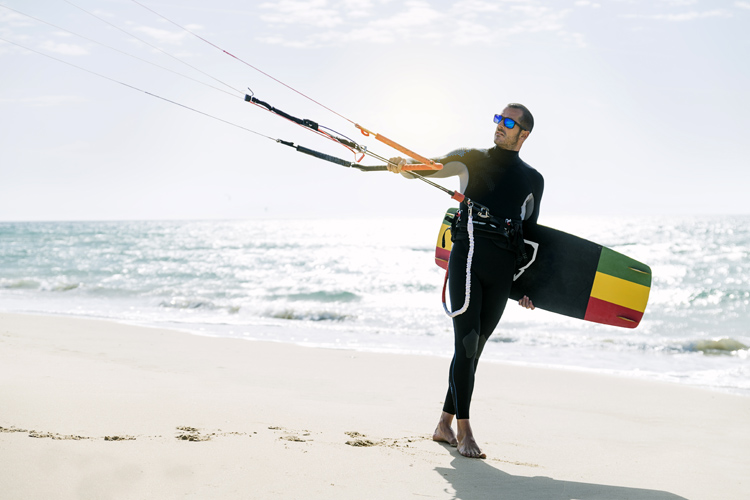The so-called "walk of shame" is one of the oldest taboos in kiteboarding. However, it will always be an inevitable action for those who are learning the tricks of the trade.
So, what is the walk of shame?
When first-timers start riding a kite, they learn the basic downwind technique, which means they can only sail with the wind behind their back.
But, because they still haven't mastered the upwind riding skill, they need to stop sailing and walk back to where they started, normally along the beach.
So, if you're still not riding upwind consistently, don't worry about the walk of shame.
Why? Well, the walk of shame is nothing to be embarrassed about.
In reality, it is the safest, wisest, and smartest way of getting comfortable with kiteboarding.
And don't rush it. Take your time, and forget what others think about it.
You don't want to drift downwind and put yourself in dangerous situations.
If you can't walk back with your kite up in the air, then deflate it, wrap up the lines, slowly get back to where you started, and resume riding if you want.
Everyone Does the Walk of Shame
Actually, the walk of shame is not shameful at all. Any experienced kiteboarder knows it's part of the learning process.
But there's more. Sometimes, even advanced kiters are forced to do the walk of shame.
The presence of swimmers, ships, surfboards, rocks, piers, and other obstacles may hinder an upwind ride.
Moreover, if you don't sail a kite for a few months, and you forgot or don't feel comfortable with your subtle upwind riding skills, then a walk back along the beach is always a good idea.
Finally, if for any reason the wind dies down, the walk of shame is the only option for any kiteboarder, beginner, or pro.
The walk of shame itself also involves a few techniques.
You need to be able to carry your board in one hand and grab the kite bar with the other while keeping the kite flying between 11 and 1 o'clock.
It can be more or less easy, depending on the wind direction and the angle of the beach.
If you feel the wind is too strong, or you simply can't control your kite, land your kite, regain your composure, pack down your gear, and walk patiently back to your starting point.
